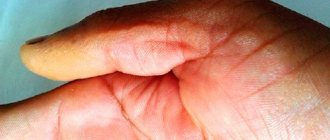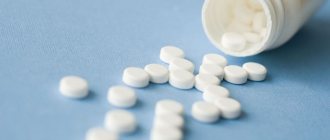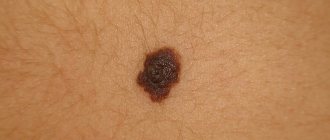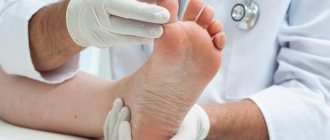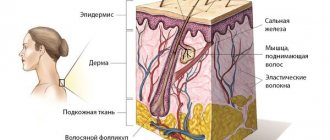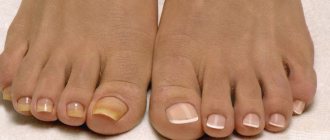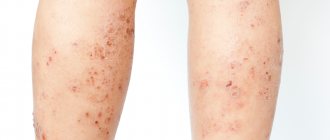Why is callus dangerous?
If you endure the pain and do nothing about such a callus, its core will continue to grow. And then it can damage the Corns (Clavus) Clinical Presentation / Medscape soft tissues and nerve fibers along the way.
Sometimes this leads to serious inflammation. It can cause ulcers on the skin. And if the inflammation affects the bones, septic arthritis or osteomyelitis will develop.
The risk of such complications increases sharply if a person has diabetes, problems with blood circulation in the legs or immunity.
Treatment of calluses in children
Children are constantly on the move. Because of this, the skin of their feet rubs, and calluses, both wet and dry, form on the heels. Under no circumstances should they be pierced, as there is a high risk of tissue suppuration.
You need to proceed as follows:
- Steam your skin while bathing.
- Carefully treat the problem area with pumice.
- Dry the skin.
- Apply salicylic ointment or other preparations containing a similar active ingredient to the callus - Salipod, Super Antimozolin, Bensalitin (the latter only for children over 10 years old).
Afterwards, you definitely need to keep warm, for which you put socks on your feet. It is necessary to ensure that the child does not run around, creating additional stress, but goes to bed.
Among the folk remedies, the above-described baths with baking soda and chamomile decoction help well.
Where does callus come from?
All dry calluses, including core calluses, appear for one reason Corns and calluses / Mayo Clinic: something rubs or presses on the skin. This could be, for example, uncomfortable shoes. Or perhaps you simply put excessive stress on your feet by walking barefoot on a hard surface or forgetting to wear socks under unworn shoes.
Due to prolonged mechanical pressure, the skin cannot shed old cells. They accumulate on the surface, compress and turn into a dense keratinized layer - a dry callus. The longer the epidermis is under stress, the denser and more noticeable the corns.
There is only one difference between an ordinary dry callus and a core callus. In the first case, the pressure on the skin is distributed over a more or less extensive area, for example, over the entire heel, and in the second, something presses on a specific point of the Corns (Clavus). Overview/Medscape. Therefore, the area of compressed skin is small in size and grows deeper, turning into a callosal root.
Removing wet calluses
A wet callus is a blister filled with intercellular fluid. It is formed when the top layer of skin peels off, which happens with prolonged friction - due to uncomfortable shoes.
Such calluses occur in people with sensitive skin. And this is not just a cosmetic flaw. When you touch a blister, the top layer of skin can be punctured or damaged, there is a risk of a wound forming, and it often becomes painful to step on your foot.
If the wet callus with a blister has a small area, then simply seal it, but first apply any wound-healing ointment directly under the patch - a pea-sized amount is enough.
Piercing
If the callus is large, it is recommended to consult a doctor. It is highly undesirable to perform piercing at home. But if you want to get rid of the problem as quickly as possible, then piercing the callus at home should be treated as a minor surgical operation. All precautions must be taken to avoid infection.
Particular care must be taken with regard to those blisters that contain not transparent intercellular fluid, but ichor. This is a sign that the damage has reached deep enough layers and reached the blood vessels.
Proceed as follows:
- Prepare a needle from a sterile disposable syringe in advance. You can first place it in medical alcohol or hydrogen peroxide.
- Wash your hands with soap and disinfect them with an antiseptic composition containing chlorhexidine.
- A needle makes several punctures in the callus sac.
- A sterile napkin is placed on top of the blister and lightly pressed on it so that the liquid flows out and is absorbed into the material.
Afterwards, the skin area is treated with an antiseptic and lubricated with a cream that has wound-healing properties, otherwise a dry callus will quickly form.
Compresses
You can get rid of calluses using aloe:
- The leaf is applied to the callus.
- Leave it overnight.
Onion compress has similar softening properties:
- The vegetable is chopped.
- Apply to the callus overnight.
How to find out that it is a core callus and not some other one
Sometimes it can be difficult to tell if the corn that's bothering you has a stem. Focus on several characteristic signs of a callus.
Location
Most often, calluses occur where the skin is not accustomedCorns and calluses / Mayo Clinic to stress. For example, on the lateral and upper surfaces of the toes, in the interdigital spaces of the feet. Sometimes the palms suffer: for example, among those who overworked the barbell.
In other places, core callus, although possible, is unlikely.
Dimensions and shape
Unlike a corn, which can have a variety of shapes, a callus is always round, small and convex. It looks like a grain of corn that has entered the skin. In the English-language medical literature, this type of callus is called corn (“corn”).
A small round depression in the center of the callus
This is how the visible part of the rod manifests itself. Please note that if the callus has formed on the top side of the fingers, the indentation may be almost invisible.
1 / 0
Photo: Migren art / shutterstock
2 / 0
Photo: sruilk / shutterstock
Pain when pressing
A common dry callus may be uncomfortable, but it doesn't hurt. If you feel pain when you press on the corn, most likely it has grown a stem.
What is the difference between a callus, a spur on the foot and other diseases?
It is not difficult for a doctor to distinguish a callus from other pathological processes.
But for a person without medical education this can be difficult.
Let's talk about how hyperkeratosis differs from other pathologies.
Sometimes a callus is confused with a heel spur.
With this disease, the plantar fascia becomes inflamed.
As a result, walking becomes painful.
The very first steps in the morning cause the most discomfort.
Calcium deposits gradually form.
It is much harder than a callus.
The skin color usually does not change, while with hyperkeratosis it becomes yellow, brown, and sometimes black.
Plantar warts look like a callus.
These are formations of viral origin.
To distinguish them, you need to squeeze the skin from the sides.
When to go to the doctor
Contact a podiatrist or dermatologist experienced in treating calluses if:
- You have diabetes, circulatory problems or heart diseaseCorns and calls / NHS. Attempting to get rid of the callus on your own in such cases can quickly lead to complications.
- The callus appears inflamedCorns and calluses / Mayo Clinic. It hurts you to even touch it, let alone press it. All this may be a sign of inflammation that has already begun deep under the skin.
You should also see a doctor if you have tried to get rid of the callus with home remedies, but the affected area still continues to cause discomfort.
How to remove callus at home
Experts at the Mayo Clinic Research Center suggest Corns and calluses / Mayo Clinic the following methods. You can choose one or combine several at once.
Take a warm bath and use a pumice stone
Experts from the American Academy of Dermatology recommend How to treat corns and calluses / AAD to immerse your foot or hand in warm water for 5-10 minutes. This is necessary for the skin to absorb moisture and become softer.
Then moisten the pumice stone in the same water and, using gentle circular movements, try to remove the stratum corneum. Do not press too hard so as not to rub the skin until it bleeds.
Under no circumstances use sharp objects to pull out the rod: you risk introducing an infection into the wound.
It is unlikely that you will be able to get rid of callus using baths in one day. The procedure will have to be repeated at least 2-3 times.
Use moisturizer
It will help retain moisture in the skin. Thanks to this, the layer of dead skin will become looser and begin to peel off.
It is best to apply the cream after a bath. To consolidate the effect, put on cotton socks or a glove on top if a callus has formed on the palm or finger.
Buy a special patch
Pharmacy plasters for calluses contain a lot of salicylic acid. This substance destroys Tasleem Arif. Salicylic acid as a peeling agent: a comprehensive review / Clinical, Cosmetic and Investigational Dermatology bonds between epidermal cells and makes the callus looser, making it easier to remove.
The patch is applied to the callus and changed from time to time - as often as stated in the instructions.
When using the patch, try to ensure that the active part does not touch healthy skin. Salicylic acid can damage it. This is especially dangerousCorns and calluses / Mayo Clinic for people with diabetes or other diseases that impair blood flow: bacteria that enter the wound can lead to a serious infection.
Use other anti-callus products
In pharmacies you can buy creams with salicylic acid, ammonium lactate or urea. These ingredients break down the bonds between dead skin cells and cause them to slough off.
Folk remedies against calluses
Removing the core growth is also possible using folk remedies.
All alternative medicine recipes are based on softening the internal callus, which falls out on its own or is carefully removed after treating the skin with pumice.
Baths
Soap and soda baths can only be used for calluses with a relatively short stem:
- Take 2-3 tbsp. l. soda and the same amount of grated soap (you can use liquid soap) per 1 liter of water.
- Keep your foot in the bath for 30 minutes.
After this, it is not necessary to rub your foot with a pumice stone. If the callus is relatively fresh and its root is short, then after several such procedures (usually 5-10 sessions are required) it can go away on its own.
For mustard baths, several tablespoons of mustard powder are diluted in hot water (up to 1 liter). The duration of one procedure is 30 minutes.
Vinegar essence
It is used to lubricate the “cap” of the callus. For the procedure, take undiluted essence, but in a very small amount.
Usually 4-5 such sessions are enough to remove even deep calluses.
Celandine juice
This is a popular folk remedy, but you need to be careful when using it at home, as it causes a chemical burn. Pharmacies sell ready-made celandine juice, but you can get it yourself by cutting off the tip of the plant. The resulting liquid should be applied to the callus.
Another recipe:
- Pass the plant through a meat grinder.
- The resulting mass is wrapped in a piece of gauze and the juice is squeezed out of it.
- Treat the callus for several days in a row.
Onion or garlic
These plants are used to treat internal calluses. You can use onion or garlic juice or apply crushed pulp from them to form.
After 10-15 procedures, the core of the callus comes out and the “cap” falls off.
Prune compress
For this:
- Take several fruits.
- Steam with boiling water.
- Remove the bone and boil in milk for 5 minutes.
Compresses made from such prunes are applied to an already steamed callus and left until it cools completely, usually this takes up to 45 minutes.
Honey and radish
For the product:
- The ingredients are mixed in equal proportions (10 g each of honey and radish, grated).
- Add a little tea tree essential oil (up to 10 drops).
- The product is applied to steamed skin.
Since it causes a chemical burn, the tissue around the problem area is pre-sealed with a plaster. It is recommended to apply this product throughout the night.
How to remove a callus with the help of a doctor
A podiatrist or dermatologist will examine the callus, assess its location and the depth of the core. And depending on this, Ahmad M. Al Aboud will offer you treatment; Siva Naga S. Yarrarapu. Corns/StatPearls Publishing. This can be a hardware pedicure, in which the stratum corneum is first loosened using various means, and then the shaft is drilled out with a special cutter. The same operation can be done using a laser or scalpel.
There are other methods, for example cryodestruction - removal of callus using liquid nitrogen. But this is a somewhat questionable method, since nitrogen damagesAhmad M. Al Aboud; Siva Naga S. Yarrarapu. Corns / StatPearls Publishing and normal skin. Because of this, the wound takes longer to heal. In addition, it has been noted that with this treatment, calluses can quickly form again.
Medicines and drug therapy
A callus on the toe or sole can be treated with pharmaceutical preparations based on salicylic acid. The preparations are applied only to the affected area; it is prohibited to apply the preparations to healthy skin. The following medicinal formulations are best suited:
- Super Anticallos is a drug for removing growths, containing the active ingredients urea and lactic acid.
- Balm Karavaeva (Vitaon) with herbal extracts. The product is very effective and can be used to treat deep root germinations.
- Nemozol is a cream containing concentrated salicylic acid and has already proven effectiveness.
- Sto-corn is a liquid substance packaged in a bottle with a dispenser. Ease of use is a big plus, but the therapy will be long, but regular use provides very good results.
Advice! If the dermatologist determines the presence of a fungus or viral infection, antifungal drugs such as Acyclovir, Penciclovir, Lamisil will be prescribed.
The Salipod plaster is a good way to combat calluses. An effective remedy rarely fails to treat growths caused by a fungal or viral infection. Application of the patch is incredibly simple:
- Apply a patch to a dry and clean lesion;
- Secure Salipod with a regular plaster;
- Do not remove the bandage for 3-4 days, then remove the bandage;
- Steam the foot and remove the rod.
If the rod part has gone deep enough, you should repeat the procedure again with wearing a bandage for 3 days. After removing the rod, a deep wound remains, which must be lubricated with an antiseptic and protected from dirt. In addition to this type of patch, pharmacies offer quite a few other identical products and their use is the only cases when piercing the growth is allowed, and then only after preliminary steaming in hot water.
Advice! Orthotics should be worn during medication treatment to relieve pressure on the foot or heel.
Medicines are not the only option; in some cases, doctors prescribe more modern methods for removing ingrown calluses:
Surgitron device: principle of operation and areas of application of the radioknife
- Laser removal is effective in very advanced cases. The laser beam burns the core base and removes all pathogenic bacteria, minimizing the risk of inflammation after the procedure.
- Hardware drilling (removal) is the process of removing a deeply embedded rod. After the procedure with a special device, the doctor puts an antibacterial agent into the wound to prevent relapses and infection of the affected area.
- Cryodestruction with liquid nitrogen is a proven method of burning out a seal with a central rod. The efficiency and painlessness of the operation, as well as the absence of the risk of secondary germination, are the advantages of the procedure.
- The radio wave ablation method is a painless operation in which radio waves evaporate water from abnormal cells, destroying the formation. Pros: no impact on adjacent healthy tissue.
- Electrocoagulation – removal of growths by exposure to alternating current. A protective crust remains at the site of burning, which acts as a biological bandage. After 10-12 days, the crust disappears on its own, leaving clean skin.
All treatment methods are prescribed only after examination by a dermatologist. It is strictly forbidden to use medications for self-medication due to the possibility of developing a fungal infection in the callus. Even a safe patch can lead to the proliferation of bacteria and the rapid development of the disease. In this case, the lesion will increase in area and depth, but it will be much more difficult to cure it.
What to do to prevent calluses from appearing
The answer is obvious: do not put excessive pressure on the skin. Here's what the experts at the American Academy of Dermatology advise: How to treat corns and calluses / AAD.
Wear comfortable shoes
Incorrectly selected shoes - too tight or loose on the foot - are highly likely to lead to the development of calluses, including core ones.
Cut your nails on time
Due to too long nails, the toes do not fit into the shoes and become bent. In this case, even shoes or boots chosen to fit begin to press.
Use special shoe pads
Silicone gaskets or patches can be purchased at any pharmacy. They are attached to problem areas in shoes or on the leg and thus protect the skin from excessive pressure.
Treatment of burst calluses
If a callus on your foot bursts, you should:
- Clean the affected area.
- Make a bath with soda.
- Then use special healing agents.
Super Antimozolin cream, which contains not only an antiseptic (salicylic acid), but also aspen and eucalyptus extracts, which accelerate the healing of cracks in the skin, has proven itself well. The cream is applied to the affected area once a day and sealed with a regular band-aid.
You can wash the area where the burst blister was located with hydrogen peroxide, apply synthomycin emulsion and apply a bandage.
Bensalitin ointment, which contains salicylic and benzoic acids, which have antiseptic properties, is considered an effective remedy for treating already aged, burst calluses.
Use it like this:
- Lubricate the skin around the callus with Vaseline and seal it with a band-aid.
- The blister is lubricated with medicinal ointment, and this area is sealed with another bandage.
- Leave the compress for 10-12 hours.
- The patch is removed and the dead skin is carefully removed.
If there is suppuration, antibiotics such as Baneocin are used. This drug is available in powder form. They can treat the skin of even small children. The course of treatment should not exceed 7 days.


